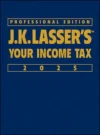Impact of Fiscal Cliff Law For 2012 Returns
Most of the talk about the American Taxpayer Relief Act of 2012, the fiscal cliff legislation just signed into law, has been about how it extends the Bush-era tax cuts to 2013 and beyond for most taxpayers. However, the new law also includes some last-minute tax breaks for 2012 that may reduce your taxes this filing season. A “patch” has been provided for the 2012 alternative minimum tax (AMT), and several tax breaks that had expired at the end of 2011 have been retroactively extended.
AMT relief
The new law keeps millions of taxpayers from becoming subject to the AMT for 2012 and later years by increasing the exemption and allowing all nonrefundable personal tax credits to offset the AMT as well as regular income tax.
For 2012, the AMT exemptions are:
- $50,600 for single taxpayers and heads of households
- $78,750 for married couples filing jointly and qualifying widows and widowers
- $39,375 for married taxpayers filing separately
These exemption amounts will be increased by an inflation adjustment for 2013 and later years.
Extenders
The following tax breaks had expired at the end of 2011 but are extended to 2012 and 2013 by the new law:
- Election to claim state and local general sales taxes as an itemized deduction in lieu of state and local income taxes
- Above-the-line deduction for tuition and related fees
- Above-the-line deduction for educator expenses
- Exclusion from income for up to $2million of cancelled mortgage debt on a principal residence
- Monthly exclusion for employer-provided transit benefits up to same limit as parking benefits ($240 per month for 2012)
- Treatment of mortgage insurance premiums as home mortgage interest eligible for itemized deduction
- Higher charitable deduction limits for donations of real estate for conservation purposes
- Tax-free treatment for those age 70 ½ or older on direct transfers up to $100,000 from traditional IRAs to public charities (direct from IRA trustee to charity)
Because Congress did not extend tax-free treatment for such charitable transfers by the end of 2012, it has provided two types of transition relief for transfers made before February 1, 2013. The first type of relief allows a taxpayer to make a direct IRA transfer to a charity by the end of January and elect to have it treated as if it were made on December 31. The other type of relief allows a taxpayer who took an IRA distribution in December 2012 to treat it as a qualified charitable distribution (up to the $100,000 limit) to the extent it is transferred in cash to a charity by the end of January; tax-free treatment can apply even though the distribution was not directly transferred from the IRA to the charity.
Depreciation
Writing off the cost of depreciable property over a period of years, usually its class life or recovery period specified in the tax law.



